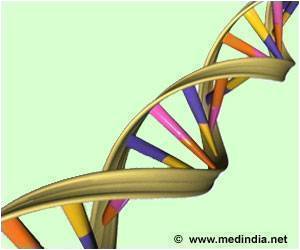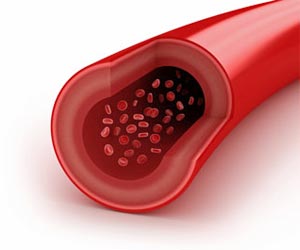The model provides a new tool for studying the spleen's role in controlling diseases that affect the shape of red blood cells, such as malaria and sickle cell anemia.

‘The spleen prevents pathogens from reaching the bloodstream and filters out old and misshapen red blood cells through the interendothelial slits.’





The spleen is like the water treatment plant for the body's bloodstream. It prevents pathogens from reaching the bloodstream and filters out old and misshapen red blood cells. The size, shape and elasticity of red blood cells are essential for survival -- in order for the cells to deliver oxygen to the body's vital organs, they must be able to stretch to fit through the narrow capillaries leading to the organs. Diseases that impact red blood cells' size and structure, like malaria, sickle cell anemia, thalassemia and hereditary spherocytosis, cause damage by restricting blood flow throughout the body or causing red blood cells to collect in the spleen. Previous studies have shown that part of the spleen's filtration process relies on having red blood cells squeeze through tiny slits between the endothelial cells that line the spleen's blood vessels. These "interendothelial slits" are no larger than 1.2 micrometers tall, 4 micrometers wide (about 5 percent of the thickness of human hair), and 1.9 micrometers deep. More rigid and misshapen blood cells might not be able to pass through these narrow passages. This process cannot be observed in vivo because of the minute size of the slits.
In order to "see" how the interendothelial slits regulate red blood cell circulation, the researchers created a computer simulation based on dissipative particle dynamics, a modeling method developed and refined for biological cells in partnership with Brown University Professor George Karniadakis. Their model allowed them to determine the range of cell sizes and shapes that could fit through the slits. The range closely mirrored the range of sizes and shapes for healthy red blood cells, indicating that only healthy cells should be able to pass through the slits.
"The computational and analytical models from this work, along with a variety of experimental observations, point to a more detailed picture of how the physiology of human spleen likely influences several key geometrical characteristics of red blood cells," Suresh said. "They also offer better understanding of how the circulatory bottleneck for the red blood cell in the spleen could affect a variety of acute and chronic disease states arising from hereditary disorders, human cancers and infectious diseases, with implications for therapeutic interventions and drug efficacy assays."
In addition to giving researchers a better picture of how the spleen functions, the findings provide new insights into drug treatments. A class of drugs currently in development for treating malaria alters the shape of red blood cells infected with malaria, theoretically preventing them from passing through the interendothelial slit. One such drug, spiroindoline KAE609, is in clinical trials. The researchers' results also could explain why artemisinin-based anti-malarial drugs, which stiffen healthy and malaria-infected red blood cells, could lead to severe anemia.
Advertisement
Advertisement













